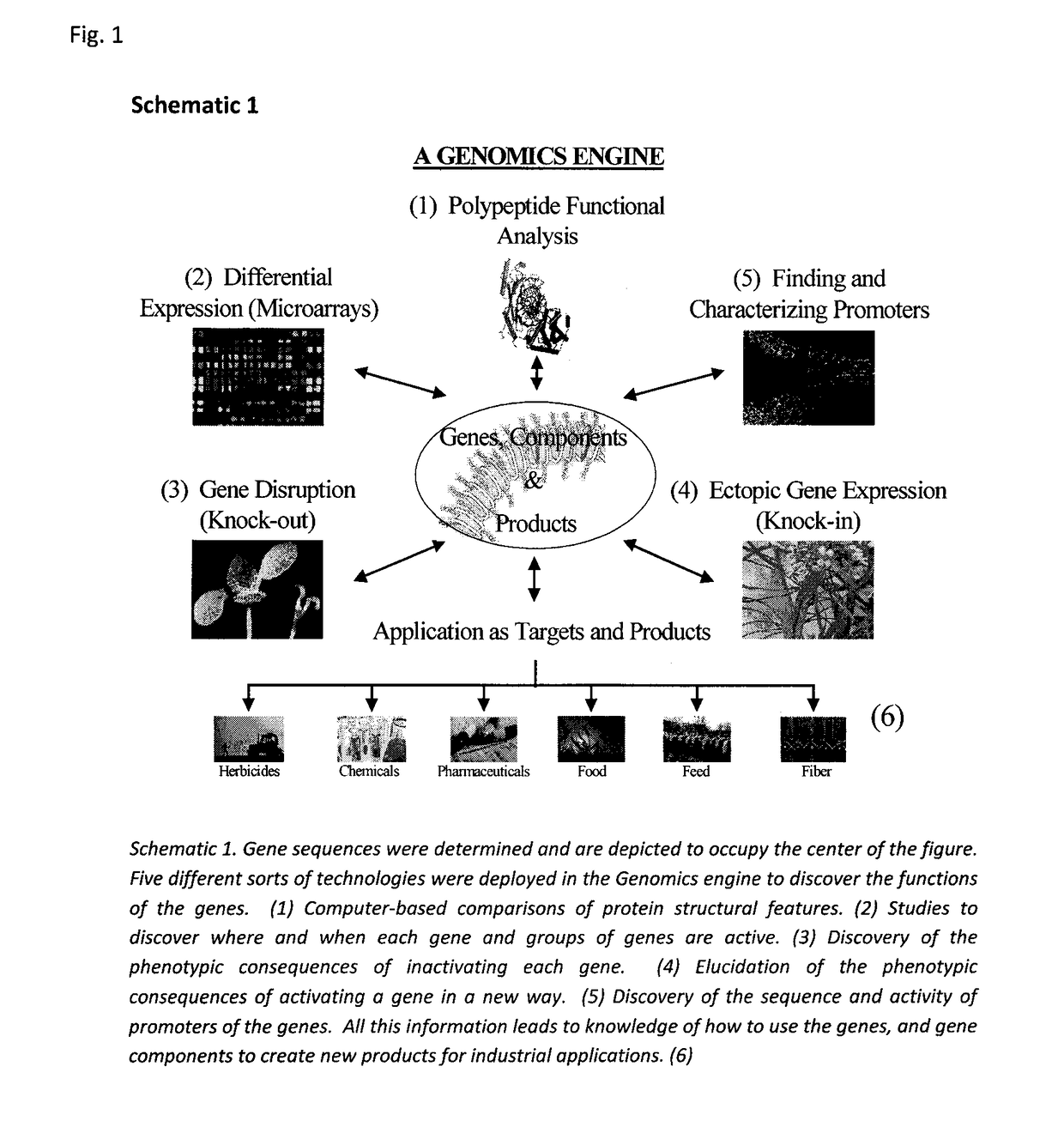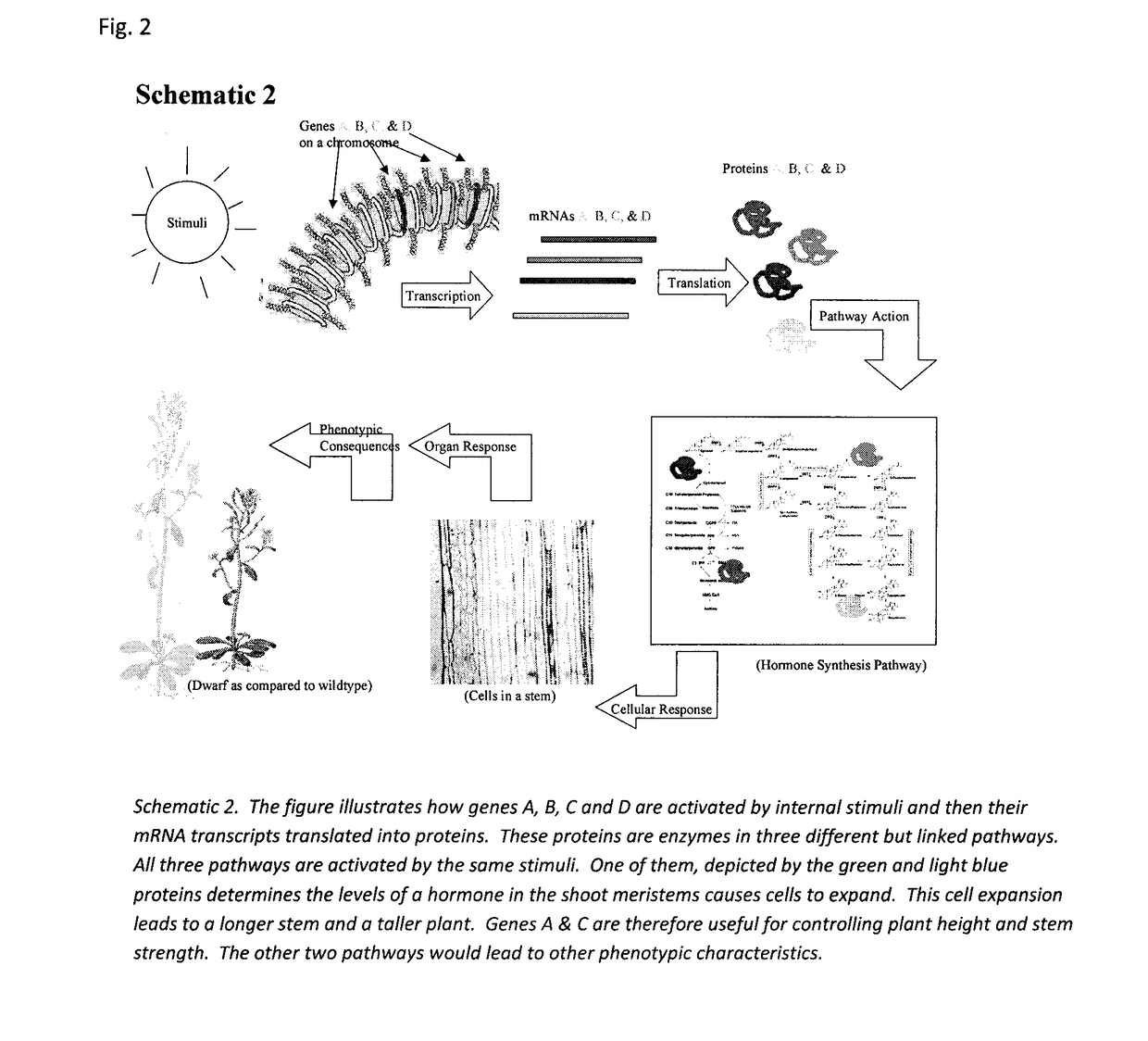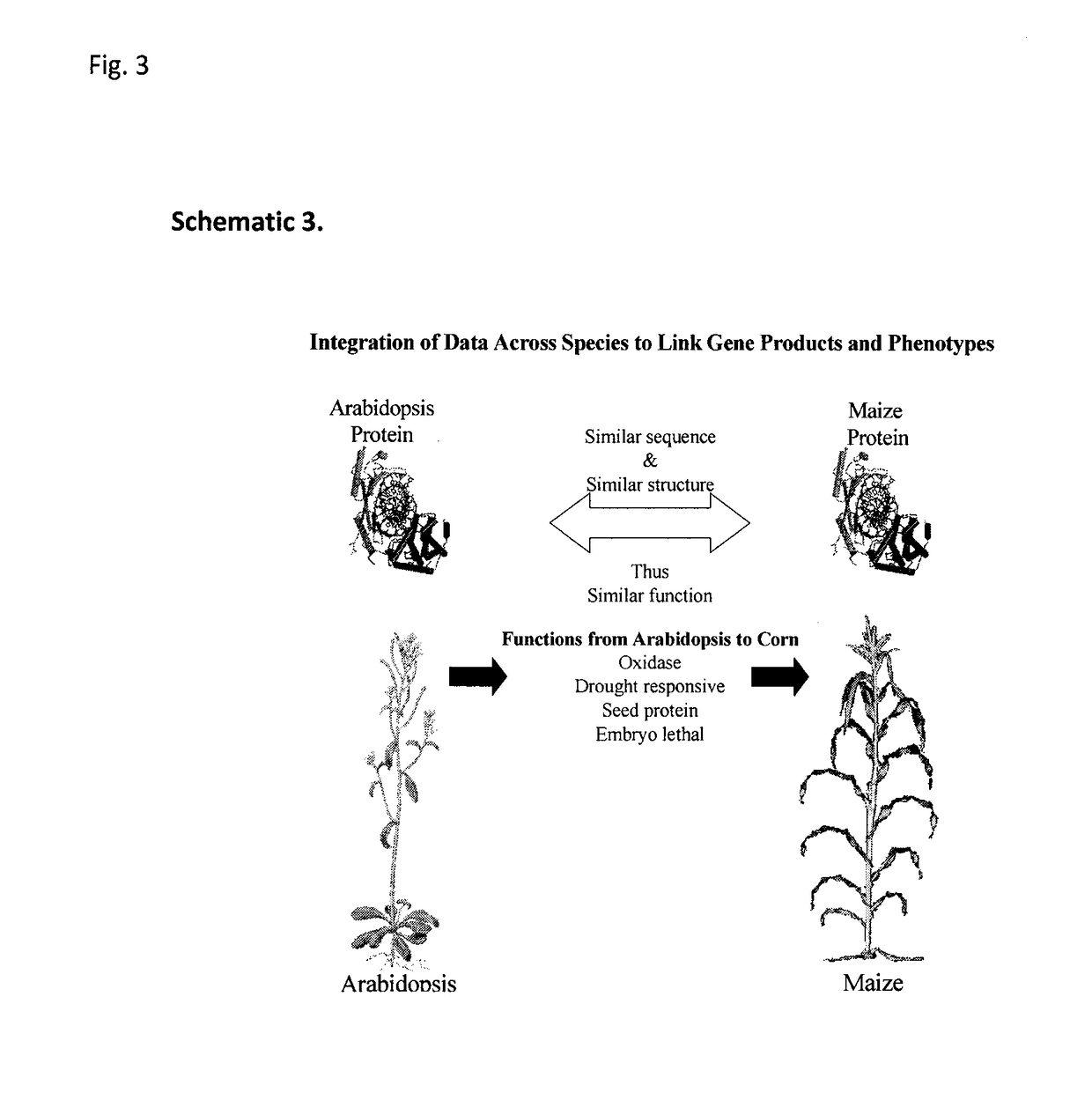Sequence-determined DNA fragments and corresponding polypeptides encoded thereby
- Summary
- Abstract
- Description
- Claims
- Application Information
AI Technical Summary
Benefits of technology
Problems solved by technology
Method used
Image
Examples
example 1
aration
[2287]A number of the nucleotide sequences disclosed in the Reference and Sequence tables or polynucleotides encoding polypeptides of the Protein Group or Protein Group Matrix tables, herein as representative of the SDFs of the invention can be obtained by sequencing genomic DNA (gDNA) and / or cDNA from corn plants grown from HYBRID SEED #35A19, purchased from Pioneer Hi-Bred International, Inc., Supply Management, P.O. Box 256, Johnston, Iowa 50131-0256.
[2288]A number of the nucleotide sequences disclosed in the Reference and Sequence tables or polynucleotides encoding polypeptides of the Protein Group or Protein Group Matrix tables, herein as representative of the SDFs of the invention can also be obtained by sequencing genomic DNA from Arabidopsis thaliana, Wassilewskija ecotype or by sequencing cDNA obtained from mRNA from such plants as described below. This is a true breeding strain. Seeds of the plant are available from the Arabidopsis Biological Resource Center at the ...
example 3
y Experiments and Results
1. Sample Tissue Preparation
(a) Roots
[2423]Seeds of Arabidopsis thaliana (Ws) were sterilized in full strength bleach for less than 5 min., washed more than 3 times in sterile distilled deionized water and plated on MS agar plates. The plates were placed at 4° C. for 3 nights and then placed vertically into a growth chamber having 16 hr light / 8 hr dark cycles, 23° C., 70% relative humidity and ˜11,000 LUX. After 2 weeks, the roots were cut from the agar, flash frozen in liquid nitrogen and stored at −80° C. (EXPT REP: 108439 and 108434)
(b) Root Hairless Mutants
[2424]Plants mutant at the rhl gene locus lack root hairs. This mutation is maintained as a heterozygote.
[2425]Seeds of Arabidopsis thaliana (Landsberg erecta) mutated at the rhl gene locus were sterilized using 30% bleach with 1 ul / ml 20% Triton-X 100 and then vernalized at 4° C. for 3 days before being plated onto GM agar plates. Plates were placed in growth chamber with 16 hr light / 8 hr. dark, 23° C...
example 4
riments and Results
Production of Samples
[2565]mRNA was prepared from 27 plant tissues. Based on preliminary cDNA-AFLP analysis with a few primer combinations, 11 plant tissues and / or pooled samples were selected. Samples were selected to give the greatest representation of unique band upon electrophoresis. The final 11 samples or pooled samples used in the cDNA-AFLP analysis were:
S1Dark adapted seedlings S2Roots / Etiolated Seedlings S3Mature leaves, soil grown S4Immature buds, inflorescence meristem S5Flowers opened S6Siliques, all stages S7Senescing leaves (just beginning to yellow) S8Callus Inducing mediumCallus shoot inductionCallus root induction S9WoundingMethyl-jasmonate-treatedS10Oxidative stressDrought stressOxygen Stress-floodingS11Heat treated light grown seedlingCold treated light grown seedlings
[2566]cDNA from each of the 11 samples was digested with two restriction endonucleases, namely TaqI and MseI. TaqI and MseI adapters were then ligated to the restriction enzyme fr...
PUM
| Property | Measurement | Unit |
|---|---|---|
| Temperature | aaaaa | aaaaa |
| Temperature | aaaaa | aaaaa |
| Fraction | aaaaa | aaaaa |
Abstract
Description
Claims
Application Information
 Login to View More
Login to View More - R&D
- Intellectual Property
- Life Sciences
- Materials
- Tech Scout
- Unparalleled Data Quality
- Higher Quality Content
- 60% Fewer Hallucinations
Browse by: Latest US Patents, China's latest patents, Technical Efficacy Thesaurus, Application Domain, Technology Topic, Popular Technical Reports.
© 2025 PatSnap. All rights reserved.Legal|Privacy policy|Modern Slavery Act Transparency Statement|Sitemap|About US| Contact US: help@patsnap.com



